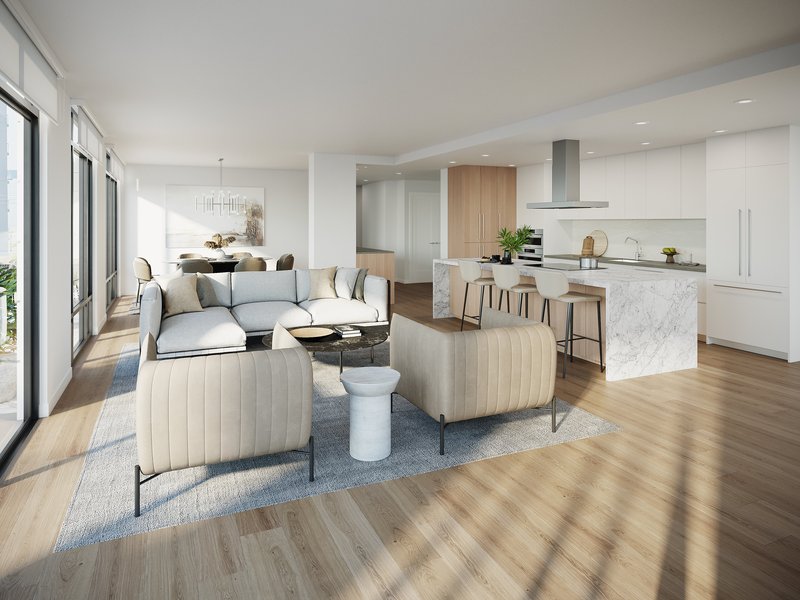The Impact of Architectural Rendering on Client Communication and Engagement
Architectural rendering plays a crucial role in client communication and engagement within the field of architecture. It is a powerful tool that allows designers to visually communicate their design concepts and ideas to clients. In this article, we will explore the impact of architectural rendering on client communication and engagement, examining how it enhances understanding, builds trust, facilitates decision-making, and enables collaboration. We will also delve into the advantages of remote collaboration and discuss real-life case studies that show the successful implementation of architectural rendering in client communication. By embracing the power of architectural rendering, architects can elevate their client interactions and deliver exceptional results.
Traditional Methods of Client Communication
Traditionally, architects relied on drawings, sketches, and written descriptions to communicate their design ideas to clients. However, these methods often faced limitations in effectively conveying the spatial aspects and intricate details of the design. Clients with limited design experience may struggle to visualize the result based on these traditional communication tools. This is where architectural rendering steps in as a game-changer.
Visualizing Design Concepts

One of the key impacts of architectural rendering on client communication is its ability to visualize design concepts and ideas. With the use of advanced rendering software, architects can create realistic and immersive visualizations of their designs. These renderings offer clients a clear and tangible representation of the project, enabling them to grasp the proposed design concepts with greater ease. By visualizing the space, materials, lighting, and other design elements, clients can better understand how their project will look and feel upon completion.
Building Client Confidence and Trust
Architectural rendering plays a crucial role in building client confidence and trust. Clients often invest significant time, money, and emotion into their projects, and they need assurance that their vision will be realized. By providing realistic renderings, architects can instil confidence in clients, showing them that their ideas are understood and can be brought to life. The visual representation of the design fosters transparency and clear communication, establishing a sense of trust between the architect and the client.
Facilitating Decision-Making
Architectural rendering facilitates informed decision-making by allowing clients to explore different design options and make choices confidently. With renderings, clients can visualize alternative design elements, materials, colour palettes, and spatial configurations. They can see the impact of these choices on the overall aesthetics and functionality of the space. This visual clarity empowers clients to actively participate in the design process, deciding based on a deeper understanding of the design implications.
Collaborative Design Process

Architectural rendering enhances collaboration between designers and clients throughout the design process. By involving clients in the visualization phase, architects can gather valuable feedback and insights, ensuring that the design aligns with the client's vision and requirements. This collaboration promotes a sense of ownership and involvement, as clients feel heard and valued. Through visual communication, architects can effectively convey design modifications and iterations, making the design process more interactive and inclusive.
Managing Expectations
One challenge in client communication is managing expectations. Misunderstandings and discrepancies between the client's vision and the outcome can lead to disappointment and conflicts. Architectural rendering addresses this issue by aligning client visions with design concepts. By visualizing the proposed design, architects can ensure that the client's expectations are accurately represented. Any discrepancies or discrepancies can be identified and resolved early on, saving time and minimizing costly changes during the construction phase.
Remote Collaboration and Global Reach
Architectural rendering enables remote collaboration with clients, overcoming geographical barriers and expanding the reach of design services. Through digital rendering tools and online platforms, architects can communicate and collaborate with clients in different locations. This is beneficial for international projects or when clients cannot visit the physical site. Real-time communication, combined with visual representations, allows architects to gather feedback, understand client preferences, and make design decisions collaboratively, regardless of physical distance. This level of remote collaboration broadens the opportunities for architects to work with clients globally, expanding their reach and creating new avenues for growth.
Case Studies: Successful Implementation of Architectural Rendering in Client Communication
To further illustrate the impact of architectural rendering on client communication and engagement, let's examine some real-life case studies. These examples show how architectural rendering has significantly influenced project outcomes and client satisfaction.
Case Study 1: Residential Interior Design Project
In a residential interior design project, the architect used architectural rendering to communicate design concepts to the client. Through realistic 3D renderings, the architect showcased various furniture layouts, material options, and colour schemes. The client could visualize different design possibilities and actively take part in the decision-making process. The renderings facilitated effective communication, enabling the architect and client to align their visions and make informed choices. As a result, the final design accurately reflected the client's preferences, leading to a highly satisfied client and a successful project outcome.
Case Study 2: Commercial Office Space Renovation
In a commercial office space renovation project, architectural rendering played a crucial role in managing client expectations. The architect created detailed renderings of the proposed design, including the layout, lighting, and furniture arrangement. By sharing these renderings with the client, the architect effectively communicated the design intent and addressed any concerns or uncertainties. The client could envision the result and provide valuable feedback. This iterative collaboration between the architect and the client fostered a strong sense of trust and transparency. The final design not only met but exceeded the client's expectations, resulting in a long-lasting professional relationship.
Conclusion
Architectural rendering has revolutionized client communication and engagement within the field of architecture. By harnessing the power of visual representation, architects can effectively communicate design concepts, build client confidence and trust, facilitate decision-making, and foster a collaborative design process. Architectural rendering also enables architects to manage client expectations, prevent misunderstandings, and achieve successful project outcomes. With the advancement of digital rendering technologies and online collaboration platforms, architects can overcome geographical barriers and engage with clients globally.
In today's competitive design industry, embracing the impact of architectural rendering is essential for architects seeking to deliver exceptional client experiences. By incorporating architectural rendering into their design process, architects can elevate client satisfaction, strengthen professional relationships, and achieve outstanding results. As technology continues to evolve, architectural rendering will continue to play a pivotal role in transforming client communication and engagement, shaping the future of the architecture industry.
Our Services
View some of our most popular services below.











